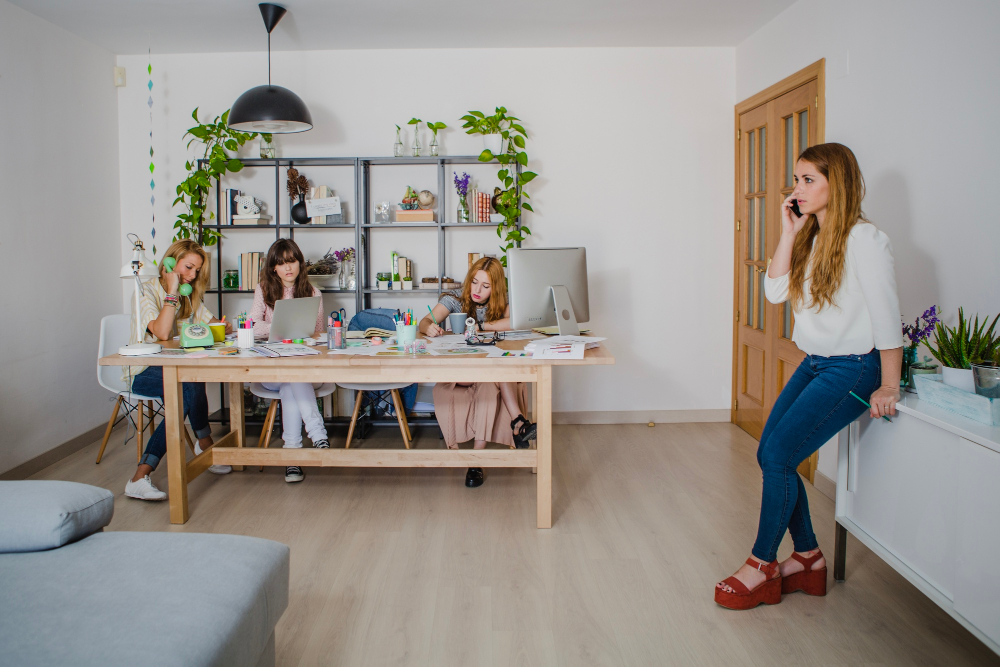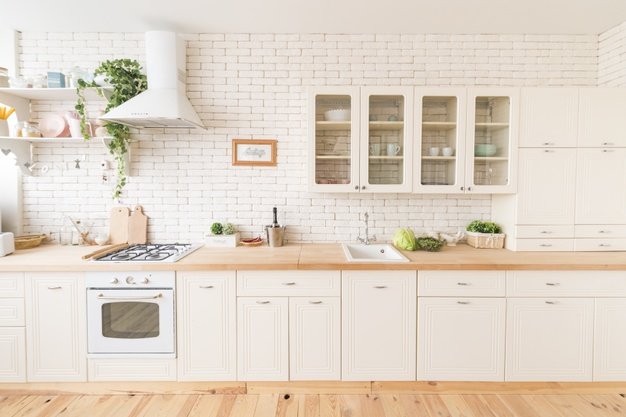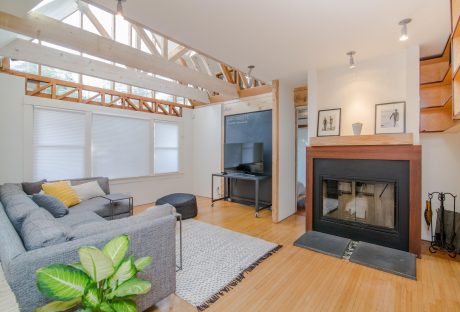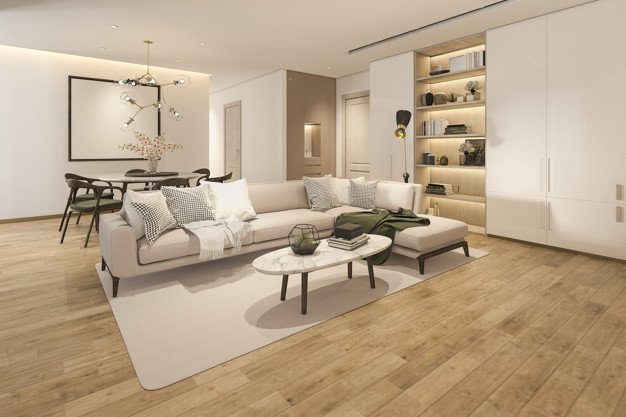Some people choose to live in a small home, rental room, or apartment. This could be for a lot of reasons, like financial constraints or personal preferences. Small is beautiful after all and, nowadays, highly practical too!
However, living in a small space doesn’t have to equate to feeling cramped or uncomfortable. Indeed, it’s very easy to create a warm and cosy atmosphere when you have a smaller area to work with. However, if you want to bring an airy, spacious feel to your home or room’s limited acreage, you can turn to colour, lighting, and the right furniture to achieve your goal.
Here are some simple tips to make a small space look and feel bigger.
Draw the Eye Up :
Most people choose to paint their ceilings a safe, light colour like white, beige, or cream, which indeed helps bounce the light around a small room. However, to create the illusion of a taller space, using bolder colours will help draw the eye up and achieve this effect. Reds and oranges are the obvious choices, but you can also go for dark blues and violet for more drama. If you are hesitant to try dark colours on your ceilings, decorate it instead with interesting patterns or a simple geometric mural.
Use Reflective Surfaces :
Using mirrors instead of paintings on your walls will help reflect the light better and open up space in a jiffy. But mirrors aren’t your only options. You can also use furniture that has glass, clear plastic, silver, chrome, and other shiny, reflective elements. Switch out your wooden coffee table with a glass one and see how your space instantly looks bigger.
Where possible, you should also incorporate accessories that can reflect light. For example, you can install a wall fountain with a silver, gold, or stainless steel backing, so both the water and the backing can help bounce the light around. The fountain can also serve as a piece of artwork, so you don’t have to fill your space with extra accessories. You can also try focusing a light onto the fountain to further increase the amount of light in your home.
Get Big Key Pieces of Furniture :
You might be tempted to get several smaller pieces of furniture, but this would likely end up in a cluttered-looking and therefore smaller-looking space. It’s better to get a few key pieces — like your bed room and dining table — in standard or bigger sizes with simple, clean lines. According to Ritely, there are many ideas that will help you to make the room appear more organized and comfortable.
Use a Monochromatic Color Scheme :
A monochromatic colour scheme makes your space look coherent and put-together. The actual colour doesn’t matter as long as they are in the same family, although cool colours like blue and green and subtle warm colours like yellow and peach are great choices for evoking that open feel. Use these colours on your walls, furniture, and other accessories like throw pillows and vases.
Hang Curtains High :
Hang your curtains close to the ceiling and let them fall right down to the floor to make any room look taller. If it makes things easier, install the rods or tracks on the ceiling for more height; the fabric will also fall more artfully this way. Keep the window treatments in the same colour scheme, ideally in the lighter end of the spectrum, to achieve a seamless look.
You should also veer away from thick, heavy drapes and instead opt for lighter curtains in fabrics like cotton, linen, or even lace. Roman shades also work well for this purpose. If privacy is not an issue, you can opt for valances instead of full-length curtains so that you still have window trimmings that at the same time allow more natural light to filter in.
Opt for Lamps Instead of Overhead Lights :
When you use top-down lighting fixtures, the light is focused in one space. This draws the eye toward that are, making the entire room look constrained. Opt instead for various kinds of lamps to spread the light. Slender, elongated designs work best as these also give the illusion of height. If you opt for floor or desk lamps, choose styles that have a small base that matches the colour of the shade.
With these simple design tips, you don’t need to break down walls to create more space — or at least the illusion of it — in your small home. Try them now and let us know which ones work the best for you!
Read Also :






















